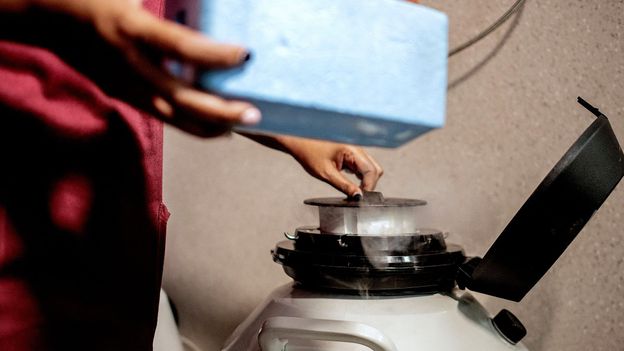The Netherlands, Belgium, Germany and other countries root their new definitions in “potentiality“. Instead of defining an embryo as human life these definitions consider a zygote, which is a single cell and the start of an embryo, “to be capable of generating a human being”, rather than being human in its current state.
However, Spain has a slightly different take, defining an embryo as “a phase of embryonic development”, but that phase begins inside the uterus.
Although definitions of what an embryo is differ slightly, the Alabama Supreme Court’s ruling that a frozen embryo is a child is unprecedented.
“The Alabama ruling is based on an idiosyncratic view of the embryo that is very marginal,” says Nicolas Rivron of the Institute of Molecular Biotechnology of the Austrian Academy of Sciences in Vienna, and the lead author of the perspective article in Cell. He says biology defines an embryo as a group of cells that can potentially form a foetus.
“The legal definition of an embryo is different from the biological definition as it does not aim to describe the embryo scientifically, but rather to protect it,” he adds. “Legal definitions should be informed by biological insight, yet they are also crafted based on considerations that vary worldwide, as they are rooted in philosophical, ethical, social or cultural beliefs.”
When does personhood begin?
In a 2013 blog post published by the Public Library of Science, an open-access publisher for science and medicine, geneticist Ricki Lewis offers a timeline of embryo development and gives her own opinion for when personhood may start.
“The ability to survive outside the body of another sets a practical, technological limit on defining when a sustainable human life begins,” is Lewis’s view on the topic. “Having a functional genome, tissue layers, a notochord, a beating heart…none of these matter if the organism cannot survive where humans survive.”
Richard Paulson, director of University of Southern California Fertility, wrote in an editorial for F&S Reports, the journal of the American Society of Reproductive Medicine, that “the concept of ‘life begins at conception’ is neither scientific nor a part of any (ancient) traditional religious teaching.”
“The writers of the Bible (as well as other religious texts),” he continues, “knew nothing about eggs, sperm or fertilisation. It was only after medical science revealed the basic steps in embryonic development in the mid-20th century that some religious groups seized on the idea that human life must therefore ‘begin’ at fertilisation.”
What are current practices regarding the destruction of unused embryos in IVF?
With IVF procedures, often supernumerary – or extra – embryos exist, and patients need to make the decision as to whether to have their embryos stored, donated or destroyed.
“In IVF as in nature, only a small proportion of fertilised eggs are able to implant and grow even when we create the ideal conditions for a successful pregnancy,” says Sue Ellen Carpenter, a fertility doctor at Bloom Fertility in Atlanta, Georgia. “To me, embryos occupy a unique moral space. They are potential life and, accordingly, require respect and special care.”
In the case before the Alabama Supreme Court, a patient entered the cryogenic nursery in 2020, removed the embryos in question from the freezer, and accidentally dropped them on the floor when the embryos “freeze-burned” their skin, according to the ruling.
Although the Alabama clinic did not intentionally destroy the three couples’ frozen embryos, IVF embryos are routinely destroyed if they don’t meet the criteria for transferring to a womb for implantation or if patients have completed childbearing and do not wish to have more children.

Amanda Smith is a dedicated U.S. correspondent with a passion for uncovering the stories that shape the nation. With a background in political science, she provides in-depth analysis and insightful commentary on domestic affairs, ensuring readers are well-informed about the latest developments across the United States.








